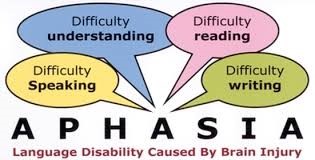CHAPTER 4: Learning, Memory, and Language
IN THIS CHAPTER
Language
1One of the most prominent human abilities is language, a complex system involving many components, including sensory -motor function and memory systems. Although language is not fully understood, scientists have learned a great deal about this brain function from studies of patients who have lost speech and language abilities as a result of a stroke. Genetic analyses of developmental disorders of speech and language, as well as brain imaging studies of normal people, also have added to our knowledge.
2It has long been known that damage to different regions within the left hemisphere produces different kinds of language disorders, or aphasias. Damage to the left frontal lobe can produce nonfluent aphasias such as Broca’s aphasia, a syndrome in which speech production abilities are impaired. Speech output is slow and halting, requires effort, and often lacks complexity in word or sentence structure. Although speaking is impaired nonfluent aphasics still comprehend heard speech, although structurally complex sentences may be poorly understood. Damage to the left temporal lobe can produce fluent aphasia such as Wernicke’s aphasia, in which comprehension of heard speech is impaired. Speech output, although of normal fluency and speed, is often riddled with errors in sound and word selection and tends to be unintelligible gibberish.
3 Damage to the superior temporal lobes in both hemispheres can produce word deafness, a profound inability to comprehend auditory speech on any level. Whereas Wernicke’s aphasics can often comprehend bits and pieces of a spoken utterance, as well as isolated words deafness, patients with word deafness are functionally deaf for speech, lacking the ability to comprehend even single words, despite being able to hear sound and even identify the emotional quality of speech or the gender of the speaker.

4Research on aphasias has led to several conclusions regarding the neural basis of language. Researchers once believed that all aspects of language ability were governed only by the left hemisphere. Recognition of speech sounds and words, however, involves both left and right temporal lobes. In contrast, speech production is a strongly left-dominant function that relies on frontal lobe areas but also involves posterior brain regions in the left temporal lobe. These appear to be important for accessing appropriate words and speech sounds. Although the understanding of how language is both produced and understood by the brain is far from complete, several techniques, including genetic studies and imaging methods, have increasingly been put to use. Through the use of these tools, we can expect to gain important insights into this critical aspect of brain function.
5During the last decade, novel insights have emerged through molecular genetic studies of inherited disorders that impede the development of fluent speech and language. For example, rare mutations of a gene called FOXP2 impede learning to make sequences of mouth and jaw movements that are involved in speech accompanied by difficulties that affect both spoken and written language. The FOXP2 gene codes for a special type of protein that switches other genes on and off in particular parts of the brain. Changes in the sequence of this gene may have been important in human evolution. Researchers are studying the differences in this gene between humans and animals to learn more about the development of language.
6Functional imaging methods, too, have identified new structures involved in language. Systems involved in accessing the meaning of words appear to be located (in part) in the middle and inferior portions of the temporal lobe. In addition, the anterior temporal lobe is under intense investigation as a site that may participate in some aspect of sentence-level comprehension.
7Recent work has also identified a sensory motor circuit for speech in the left posterior temporal lobe, which is thought to help the systems for speech recognition and speech production communicate with each other. This circuit is involved in speech development and is thought to support verbal short-term memory
8Equally important is the brain’s role in movement. For example, part of language is using the muscles of the mouth and jaw correctly to produce sounds. Throughout the body, muscles allow us to move in many complex ways. The next chapter discusses the intricate interplay between the brain and muscles in our body.
